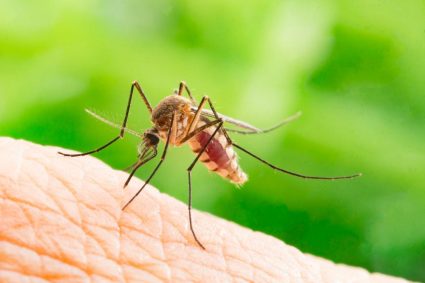
Electronic mosquito repellents (EMRs) have become increasingly popular as an easy-to-use, non-toxic alternative to insecticides and other chemical-based repellents. But how do these devices work, and are they really as effective as they claim to be? This comprehensive guide will delve into the science behind electronic mosquito repellents, discuss their effectiveness, and examine some leading brands and models on the market.
Electronic mosquito repellents work by emitting ultrasonic sound waves that are intended to mimic the wing-beat frequencies of predators like bats or male mosquitoes, which female mosquitoes (the ones that bite) tend to avoid. The key components of an electronic mosquito repellent circuit include a 555 timer IC, capacitors, resistors, a piezo buzzer, a Single Pole Single Throw (SPST) switch, and a 5 V battery. However, despite their design, the effectiveness of these devices in repelling mosquitoes has been disputed.
What are Electronic Mosquito Repellents?
Electronic mosquito repellents are devices that are designed to keep mosquitoes at bay by emitting ultrasonic sound waves. These high-frequency sounds are nearly inaudible to the human ear but are intended to mimic the wing-beat frequencies of predators like bats or male mosquitoes, which female mosquitoes (the ones that bite) tend to avoid.
How Do Electronic Mosquito Repellents Work?
The key components of an electronic mosquito repellent circuit include a 555 timer IC, capacitors, resistors, a piezo buzzer, a Single Pole Single Throw (SPST) switch, and a 5 V battery. The output from the astable multivibrator circuit drives a 38 KHz piezo buzzer, producing ultrasound at regular repetitions. The frequency of the output can be varied by adjusting the value of the potentiometer.
Effectiveness of Electronic Mosquito Repellents
While these devices are marketed as an effective means of mosquito control, their efficacy has been questioned. Several studies, including a review by the Cochrane Infectious Diseases Group, found that electronic mosquito repellents do not effectively repel mosquitoes. In fact, some studies found that electronic devices claiming to control mosquitoes with sound actually increased biting rates.
Alternatives to Electronic Mosquito Repellents
There are also spatial repellents like the Thermacell E90 Rechargeable Mosquito Repellent, which emit a repellent into the air, creating a mosquito-free zone. These devices use active chemicals like Metofluthrin and Allethrin, both of which are pyrethroids based on a compound found in the chrysanthemum flower.
Leading Brands and Models of Electronic Mosquito Repellents
Experts recommend several leading brands and models of electronic mosquito repellents, including the Thermacell E90 Rechargeable Mosquito Repellent, the Thermacell MR450 Mosquito Repellent, and the Dynatrap DT1050-TUNSR 1/2-Acre Insect and Mosquito Trap.
Health and Environmental Concerns
While electronic mosquito repellents are generally safe, there are potential health and environmental concerns associated with their use. One of the main components of liquid repellents, prallethrine, can have adverse effects on the human body with extended exposure. Some potential health risks include respiratory problems, liver damage, skin irritation, rashes, seizures, and breathing difficulties.
The Bottom Line
While electronic mosquito repellents are designed to repel mosquitoes by producing ultrasound, their effectiveness is disputed. It is recommended to use a combination of methods for mosquito control, including repellents applied to skin or clothing and physical barriers that prevent mosquitoes from reaching you. As with any product, it’s important to do your research and choose a product that is proven to be effective and suitable for your specific situation.
Frequently Asked Questions
What is a 555 timer IC used in Electronic Mosquito Repellents?
A 555 timer IC is a type of integrated circuit that can be used to generate timing and oscillator functions. In the context of electronic mosquito repellents, it is used to produce the ultrasonic sound waves that are intended to repel mosquitoes.
Are there any other non-chemical alternatives to electronic mosquito repellents?
Yes, there are several non-chemical alternatives to electronic mosquito repellents. These include physical barriers such as mosquito nets and screens, as well as natural repellents like citronella candles or oil. Some people also find that certain plants, such as marigolds, geraniums, and lemongrass, can help to deter mosquitoes.
Are electronic mosquito repellents safe for use around children and pets?
Generally, electronic mosquito repellents are safe for use around children and pets as they do not contain harmful chemicals. However, it’s always best to check the manufacturer’s guidelines and ensure the device is kept out of reach of curious hands and paws.
How long do electronic mosquito repellents typically last?
The lifespan of an electronic mosquito repellent can vary depending on the brand and model, as well as how often it is used. However, most devices are designed to last for several months or even years with regular use. Always check the manufacturer’s guidelines for specific information.
Can electronic mosquito repellents be used indoors and outdoors?
Yes, electronic mosquito repellents can be used both indoors and outdoors. However, they may be more effective in enclosed areas where the sound waves can bounce off walls and other surfaces. Always ensure the device is suitable for the environment in which you plan to use it.









